- Home
- Janet Evanovich
The Job Page 2
The Job Read online
Page 2
“It’s my good name that he smeared.”
“You don’t have a good name, and the last place you should be right now is in Nashville, where everyone with a badge is looking for you.”
She understood, though, why he was willing to take the risk. He was thinking like a con man and thief, not someone who was secretly working for the FBI. In Nick’s profession, his status within the underworld came from his crimes and the word of mouth they generated among his peers and, to a greater degree, those less skilled than he. His status was important because it determined the quality of crew he could recruit and the buyers he could line up on those rare occasions when he wanted to sell what he stole.
“You need my help to catch him,” Nick said.
“No, I don’t. Catching bad guys is what I do,” she said. “I caught you, remember?”
“You just love reminding me of that.”
“I certainly do,” she said, helping herself to another shrimp.
Kate called Jessup on the way to LAX and told him she believed Nick was being set up. The fact that Nick wasn’t on the run, and that she’d found him in L.A. on a big-bucks yacht belonging to a former mark, made it much easier for her to convince her boss that she was right.
“I’m relieved to hear Nick didn’t do it,” Jessup said. “We’ve had a lot of success with your covert operation. I’d hate to shut it down now. I want you to find the joker who did this, and do it fast. The Nashville field office is expecting you and will give you all the resources you need.”
Kate caught a nonstop flight to Nashville at 2:30 P.M. and spent the four-hour flight thinking about the stolen Matisse.
In her experience, there were two motives for stealing a masterpiece. Money and ownership.
Sometimes the thief stole the painting because it was worth a fortune. This kind of criminal frequently acted on impulse and had no clue how to sell the stolen art. Guys like this usually got caught very quickly. If they didn’t get caught, they’d end up stashing the painting in their garage, tossing it in a dumpster, or anonymously returning it. Someone like that wouldn’t go to the trouble to masquerade as Nick Fox.
Other times the thief stole the painting intending to immediately ransom it back to the owners or the insurance company. This was perhaps the most common approach, and it often succeeded for the thief. Collectors were often more desperate for the paintings than they were for justice. Once the owners had been contacted, they would make the payoff and keep the FBI in the dark until they got their painting back.
Art was also stolen for collateral. Kate knew that cash-strapped crooks stole enormously valuable paintings to use as collateral in drug and weapons deals. An unframed canvas was like a truck full of gold bars, only much lighter to carry and easier to move across borders. Paintings used like this could bounce around the black market for years without ever ending up on anyone’s wall. When they did turn up, it was as an unexpected find during police raids on gangs, terrorists, or drug and arms dealers.
And there were the made-to-order heists. Some outrageously wealthy and powerful people had shopping lists of famous works of art they wanted for their personal, very private, collections. Once they got their hands on a masterpiece, it would never be seen again. Kate and Nick had recently brought down someone like that in an elaborate sting.
The second motive, and one that was rarely encountered, was ownership. The thief stole the painting for his own collection. Nick was sometimes that kind of thief.
And now that she thought about it, she realized Nick was a unique thief with a third motive. Nick stole because it was fun and exciting, and because he was good at it.
So what was the motive for this heist? The thief had stolen the painting like an amateur acting out of greed, taking something valuable because it was within easy reach. But masquerading as Nick Fox showed a high level of sophistication, and a knowledge of the players in the big leagues of crime. That didn’t fit the greed scenario.
If the painting was stolen for ransom, then the museum had already heard from the thieves, or they would soon. She’d have to keep the key administrators under watch for any suspicious activity.
Someone taking the painting for collateral wouldn’t waste time on creative flourishes like setting up Nick. They cared only about the painting and what it could bring them in a trade. Super-rich people with shopping lists of masterpieces wanted discretion from their thieves and wouldn’t appreciate the glance at the camera, even if it was intended as misdirection. So she ruled out theft-to-order.
If she took money off the table for now, then the only motive left was ownership, which meant the thief was a world-class criminal in the same rarified league as Nick. And that made her wonder if Nick knew more about the crime than he was telling.
“It’s hard for me to feel much sympathy for Big Mike,” FBI Special Agent Maxine Cutler said.
Cutler was driving Kate to the FBI’s Nashville field office, located two miles north of the airport. Cutler had been waiting at the gate when the plane arrived at 8:45 P.M. She was a big-boned woman in her thirties who looked like she could toss a manhole cover as easily as a Frisbee.
“Who’s Big Mike?” Kate asked.
“Michael Gleaberg,” Cutler said. “It’s his museum that got hit. Serves him right. He discovered and managed some of the biggest country music stars of the seventies and eighties and got stinking rich off them. He looked for kids with lots of talent and no education so they’d foolishly sign contracts that gave him everything but their souls. Big Mike made them famous by bribing DJs to play their songs. He was at the center of a huge payola scandal in the late nineties, but the Bureau couldn’t make any charges stick to him.”
They crossed under the I-40 into a neighborhood of warehouses, office buildings, and airport hotels.
“He never greased any palms himself,” Cutler said. “He always had his flunkies do it. So his flunkies got jail time, and his company was fined millions and barred from the record business, but he didn’t care. His clients were already stars, so he was happy to just sit back and rake in his lion’s share of their earnings.”
“Which he spent on art,” Kate said.
“For a reason.” Cutler pulled into the parking lot of a two-story office building. The only things indicating it was a government office were the American and Tennessee flags outside the front door. “The big players on the coasts treated him like a dumb hillbilly. He figured they’d respect a man who had Picassos, Rembrandts, and Matisses hanging in his house.”
“Did it work?”
“Nobody came to see them,” Cutler said. “So he built the museum, put his best stuff in it, and called it the Gleaberg, mimicking the Getty and the Guggenheim.”
“Subtle,” Kate said.
“There isn’t anything subtle about Big Mike. He wears the biggest Stetson they make and a silver belt buckle the size of a turkey platter.” Cutler took the key out of the ignition and handed it to Kate. “This is your vehicle while you’re in town. You’re staying at the Marriott across the street. If you want a bite and a beer before bed, there’s Darfons nearby or fast food down the street. I’ll get you checked in with security and give you a quick tour.”
The tour ended at a small conference room that had been set aside for Kate and her team. On the table were several thin files, a laptop computer, a USB flash drive, and some yellow legal pads.
“This is all we’ve got,” Cutler said. “The surveillance footage from the museum cameras is on that thumb drive, and those files contain witness statements, though you won’t find much there. It happened so fast that nobody paid any attention. No two descriptions of the thief are alike.”
Kate sat down, plugged the thumb drive into the laptop, and watched the footage, which was broken up into eight mini-screens representing the feeds from eight cameras. The entrance hall of the museum was bright, modern, and airy, with large windows overlooking the Cumberland River. There wasn’t much of a crowd, and spotting the man in the hoodie was easy. He en
tered the museum with intent, a man who knew where he wanted to go and exactly how he wanted to get there, moving at a precise trajectory that kept his face completely hidden from the cameras at all times.
She followed his path across the screens to the gallery with the Matisse. He went directly to the painting, lifted it carefully off the wall with leather-gloved hands, and walked out with it the way he came. People saw him, but no one seemed to react, perhaps assuming he was an employee of the museum. Who else would dare take a painting off the wall?
As he turned to go, he briefly showed his partially obscured face to the camera. It was meant to come across as a mistake, but Kate knew better. The face was definitely Nick’s and the thief had wanted the FBI to see it.
On the screen, she watched the thief hurry outside, where a gray late-model Ford F-150 pickup was waiting on the street. He laid the painting in the truck bed, threw a tarp over it, and drove off. Neither the driver’s face, nor the license plate of the truck, were visible from the camera’s angle.
She watched the footage several more times over the next hour, studying the man and trying to get a sense of his age, mannerisms, and build. The hoodie was oversize and the jeans were baggy, making it impossible to get a sense of his physique. He didn’t walk like Nick, who seemed relaxed even when he was in a hurry. The man in the hoodie moved quickly, but also with a lightness and grace. Nothing else popped out at her. Either there was nothing there or she was too tired to see it.
Kate turned to Cutler. “How many agents have I got working for me?”
“Five, counting me,” Cutler said.
“I want someone on Gleaberg, and whoever runs his museum.”
“Alton Pruitt manages the museum. Do you think one of them was in on it?”
“I wouldn’t rule it out, but that’s not why I want them watched. If there’s a ransom demand, either Gleaberg or Pruitt is going to get it and will start acting weird and agitated.”
“Gotcha,” Cutler said.
“Let’s send this video to Quantico for analysis to make sure it hasn’t been digitally altered in any way. Next, let’s get a rundown on all the Ford F-150 trucks that have been stolen, rented, or sold in the state in the last forty-eight hours.”
“Anything else?”
“That’ll do it for now.”
Kate gathered up the files. She would read the witness statements in her hotel room over a Big Mac Extra Value Meal, but she didn’t expect to find anything useful.
The Gleaberg Museum of Art looked like a flying saucer that had crashed into a circus tent on the shore of the Cumberland River. The building had been designed by an eccentric Swedish architect who liked bold architectural flourishes that didn’t serve any structural purpose. The circular main hall of the Gleaberg was cantilevered over the river and covered under a high-tech white canvas strapped down with massive cables.
Kate met Alton Pruitt, the Gleaberg’s curator, in the center of the main hall. He was a lanky man in his forties with his black hair slicked back.
“No offense, Mr. Pruitt,” Kate said. “But you don’t look like any museum administrator I’ve ever met.”
“I hear that a lot. I’m a frustrated country music singer. I was one of Big Mike’s only clients he couldn’t make into a star. So I got a master’s degree in art history instead, and here I am. I perform on weekends in a Johnny Cash tribute band at weddings and such.”
Kate smiled at that. If she ever got married, she was going to hire this guy to get her down the aisle.
“I’ve read through the initial police reports,” Kate said. “And at the risk of sounding judgmental, it would appear that your security is lacking. The Matisse wasn’t attached to an alarm, and you don’t have any armed guards.”
“If there are armed guards, then there could be a shootout. And what would the result of that be? Bullet holes in people and paintings. We have an alarm system that we set at night. It never occurred to anyone that a painting would walk out of here during the day. We’ll fix that by putting guards at all exits.”
Kate went back to the FBI field office and spent hours sorting through all the Ford F-150 sales, rentals, and thefts. By nightfall, Kate and her crew had a list of more than a hundred trucks to look for and had located thirteen of them. None of the ones they found had any connection to the theft. She left the office around 8 P.M. and returned to her hotel room.
There was a small television bolted to the dresser but no visible remote. She was going through drawers, looking for the remote, when there was a knock at her door. She gave up on her search, squinted through the peephole, and was shocked to see Carl Jessup standing in the hall.
Her first thought was that he was there to fire her. She could think of no other reason for him to be making a personal appearance. Great. She’d been pretty much kicked out of the Navy, and now she was going to be booted out of the FBI. Okay, fine, but she was keeping the windbreaker.
She pulled herself up tall and opened the door. “It’s not often that I see you in the field,” Kate said with forced good cheer.
She took a closer look. It wasn’t Jessup. It was someone wearing a Jessup mask. Damn! Kate pulled the fake Jessup into her room with one hand, kicked his legs out from under him, and body slammed him to the floor.
“That hurt,” the fake Jessup said. “I didn’t see that coming. You really have to work on your hostess skills.”
Kate looked down at him. “Nick?”
He took the mask off. “I thought I’d surprise you.”
She closed and locked the door. “Are you out of your mind? The FBI field office is right across the street.”
“Would you prefer I’d visited you there?”
“I would have preferred you didn’t visit me at all.”
“I find that hard to believe. I’m charming. And I have a show-and-tell for you.”
“Don’t even think about it.”
“Not that kind of show-and-tell,” Nick said. “That show-and-tell comes later. I brought you a mask.”
“Of course,” Kate said. “I knew that.”
“It’s made from a thin layer of hard resin. A computer does a detailed facial reconstruction from just a couple pictures and then sculpts the mask in a 3-D printer. It’s ridiculously easy to get a mask like this. You can order one online for three hundred dollars and have it delivered to your door in forty-eight hours. Of course, I can get it done faster.”
“You could have told me this on the phone. You didn’t have to come here.”
“True, but I miss you when you’re gone.”
Kate’s heart skipped a beat. He missed her! Oh good grief, she thought. Get a grip. He’s a con man!
Nick looked around the room. “I’m starved. Where’s the minibar?”
“This room doesn’t have a minibar.”
Nick kicked his shoes off and stretched out on the bed, hands behind his head. “We need to change hotels. I have standards.”
“You need to change hotels. I’m fine. I have no standards.”
Nick grinned and crooked his finger at her. “Come here. I like a woman with no standards.”
Kate squinched her eyes closed and grunted. “Unh!” She opened one eye and studied him. “What do you know about the Gleaberg robbery that you aren’t telling me?”
“Nothing,” he said. “But I’ve done some business with Big Mike. A few years ago, right after his payola scandal, I got him to invest in a phony satellite radio network on the promise that his artists would get airplay.”
“He went for that?”
“It appealed to his greed and his desire to win. He was still angry about being locked out of the terrestrial radio business, but there was nothing in the court’s ruling that kept him from satellite radio. The deal I offered made him feel like he was getting back at the bastards who took him down. He was the perfect mark. Rich, dishonest, and greedy.”
“How much did you and your crew take him for?”
“Fifteen million dollars,” Nick said.
“Of course not,” Nick said. “It was humiliating. The wealthier the mark, the less likely he is to go to the police and admit he was played for a fool.”
They went silent when someone knocked on the door.
“Room service?” Nick asked in a whisper.
Kate shook her head no.
There was another knock. “Agent O’Hare? It’s Maxine Cutler.”
Nick grabbed his shoes and the Jessup mask, moved into the closet, and closed the door.
Kate unlatched the security lock and peeked out at Cutler.
“Can I come in?” Cutler asked. “It’s important.”
“Sure,” Kate said, stepping aside.
“We got a bulletin from Interpol,” Cutler said. “Nick Fox has struck again. He stole an ancient goblet covered with jewels from the Aykut Demirkan Museum in Istanbul last night.”
“How do they know it was Fox?”
“They lifted his prints from a display case.” Cutler handed Kate an envelope. “Your boss works fast. He has you on an early morning flight to Istanbul. The Bureau’s legal attaché for Asia has already approved your travel with Turkish authorities. Your itinerary and boarding passes are in the envelope.”
Kate did a fast check of the boarding passes and inwardly groaned. Sixteen hours with two plane changes. Coach.
“I’ll drop off the car and my weapon with the field office at five A.M.,” she said to Cutler. “If you could have someone take me to the airport, I’d appreciate it.”
Cutler left, and Nick reappeared from out of the closet.
“About the fingerprints,” she said.
Kate knew that making fake fingerprints was easy. Kits could be bought online from China for as little as six dollars. The trick was getting Nick’s prints in the first place. A law enforcement officer could access the FBI’s Integrated Automated Fingerprint Identification System to see the prints taken from Nick when he was arrested. But unless the IAFIS had been hacked, which nobody had succeeded in doing yet, there would be a log of anyone accessing Nick’s prints. She’d check that out, but she doubted she’d find any record of access besides the one initiated by Turkish law enforcement to match the print found at the Aykut Demirkan Museum. So that left only one possibility.

 Full Scoop
Full Scoop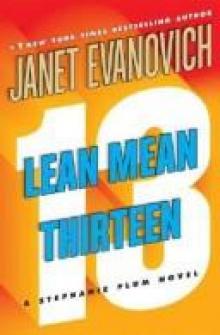 Lean Mean Thirteen
Lean Mean Thirteen One for the Money
One for the Money Full Speed
Full Speed Top Secret Twenty-One
Top Secret Twenty-One Turbo Twenty-Three
Turbo Twenty-Three Dangerous Minds
Dangerous Minds The Heist
The Heist Takedown Twenty
Takedown Twenty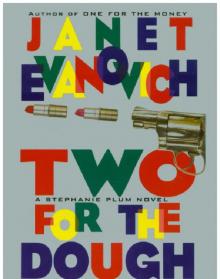 Two for the Dough
Two for the Dough Twelve Sharp
Twelve Sharp The Job
The Job Metro Girl
Metro Girl Full House
Full House The Scam
The Scam Hot Stuff
Hot Stuff Wicked Charms
Wicked Charms Hero at Large
Hero at Large Tricky Twenty-Two
Tricky Twenty-Two Plum Lovin'
Plum Lovin' Eleven on Top
Eleven on Top The Shell Game
The Shell Game Three to Get Deadly
Three to Get Deadly Four to Score
Four to Score Seven Up
Seven Up High Five
High Five Hot Six
Hot Six The Grand Finale
The Grand Finale Hard Eight
Hard Eight Plum Spooky
Plum Spooky Foul Play
Foul Play Ten Big Ones
Ten Big Ones Smokin' Seventeen
Smokin' Seventeen Fearless Fourteen
Fearless Fourteen Wicked Appetite
Wicked Appetite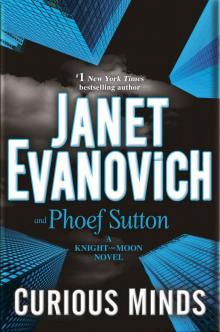 Curious Minds
Curious Minds Sizzling Sixteen
Sizzling Sixteen Wicked Business
Wicked Business The Big Kahuna
The Big Kahuna Explosive Eighteen
Explosive Eighteen Visions of Sugar Plums
Visions of Sugar Plums Full Blast
Full Blast Back to the Bedroom
Back to the Bedroom Finger Lickin' Fifteen
Finger Lickin' Fifteen Smitten
Smitten The Pursuit
The Pursuit Twisted Twenty-Six
Twisted Twenty-Six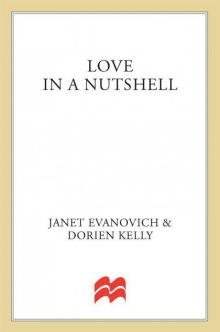 Love in a Nutshell
Love in a Nutshell The Chase
The Chase Notorious Nineteen
Notorious Nineteen Hardcore Twenty-Four
Hardcore Twenty-Four The Rocky Road to Romance
The Rocky Road to Romance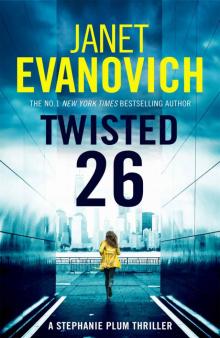 Twisted Twenty-Six (Stephanie Plum 26)
Twisted Twenty-Six (Stephanie Plum 26) Manhunt
Manhunt Plum Lucky
Plum Lucky Full Bloom
Full Bloom Wife for Hire
Wife for Hire Pros and Cons
Pros and Cons Fortune and Glory
Fortune and Glory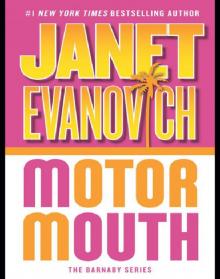 Motor Mouth: A Barnaby Novel
Motor Mouth: A Barnaby Novel Naughty Neighbor
Naughty Neighbor To the Nines
To the Nines The Husband List
The Husband List Fearless Fourteen: A Stephanie Plum Novel
Fearless Fourteen: A Stephanie Plum Novel Smitten - LOVESWEPT - 392
Smitten - LOVESWEPT - 392 Plum 12 - Twelve Sharp
Plum 12 - Twelve Sharp Smokin' Seventeen: A Stephanie Plum Novel (Stephanie Plum Novels)
Smokin' Seventeen: A Stephanie Plum Novel (Stephanie Plum Novels) Top Secret Twenty-One: A Stephanie Plum Novel
Top Secret Twenty-One: A Stephanie Plum Novel SMITTEN (Loveswept, No 392)
SMITTEN (Loveswept, No 392) Plum 10 - Ten Big Ones
Plum 10 - Ten Big Ones Tricky Twenty-Two: A Stephanie Plum Novel
Tricky Twenty-Two: A Stephanie Plum Novel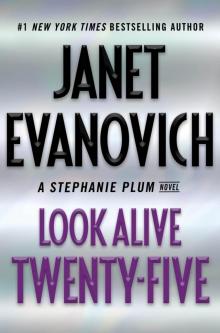 Look Alive Twenty-Five
Look Alive Twenty-Five Wicked Charms: A Lizzy and Diesel Novel
Wicked Charms: A Lizzy and Diesel Novel Motor Mouth
Motor Mouth Pros and Cons: A Short Story
Pros and Cons: A Short Story The Shell Game: A Fox and O'Hare Short Story (Kindle Single)
The Shell Game: A Fox and O'Hare Short Story (Kindle Single) Plum Boxed Set 1, Books 1-3 Stephanie Plum Novels)
Plum Boxed Set 1, Books 1-3 Stephanie Plum Novels) Between the Plums
Between the Plums